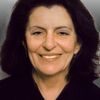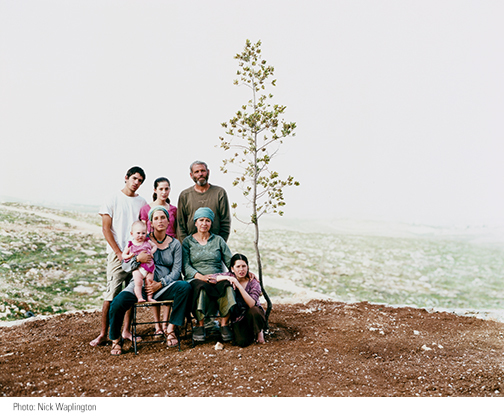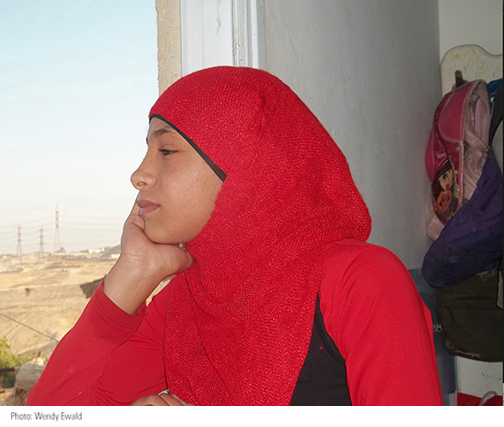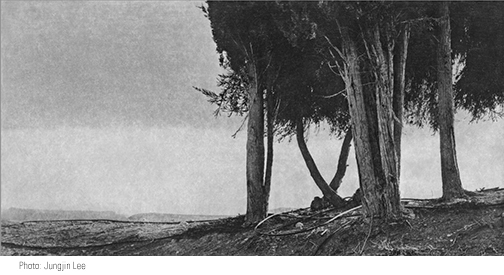In the fall of 2012, the French-born photographer Frederic Brenner took me to a swimming hole in the Bet Shean valley in Israel. Crowds sat on the edge of rocks waiting to jump in. Brenner exulted in the place, where the Romans, he told me, came in ancient times, a site I "dare not miss." He had taken a hand-picked group of photographers there, as part of a briefing for a grand project he had devised. The photographers were then commissioned to take pictures of Israel. After exhibitions in Prague, Tel Aviv, and West Palm Beach, this project reaches its next great moment at the Brooklyn Museum in "This Place."
Frederic Brenner does not think small. In 1996, he posed prominent Jews: Ed Koch, Roy Lichtenstein, Ruth Bader Ginsburg, Dr. Ruth Westheimer, among them, in a labyrinth on Ellis Island. For his Diaspora project, he traveled the world looking for Jews in unlikely locales. The ambitious undertaking resulted in a massive exhibition at the Brooklyn Museum in 2003, his photographs supplemented by a multi-volumned text with scholarly essays. Confrontational, the exhibit challenged viewers to personal places of identity. No less bold, "This Place," invites viewers to look at Israel, a place they think they know from newspaper headlines, through the artistic lenses of his select photographers, not so much to come to terms with Middle East conflicts, the abrasive edge of complicated, agenda-ridden politics, or racism. The "O" word has no place in "This Place," but an uneasy eye on "settlers" looks to the complexity of "otherness" in everyday encounters in the Holy Land and West Bank.
The selected photographers, Jungjin Lee, Martin Koller, Gilles Peress, Fazal Sheikh, Stephen Shore, Jeff Wall, Thomas Struth, Wendy Ewald, Josef Koudelka, Rosalind Fox Solomon, Nick Waplington each finding the journey life changing, approached their tenure in different ways. Each published a monograph. Rosalind Fox Solomon, for example, became interested in Christian pilgrims and shot men traveling to Bethlehem from Nigeria, their faces maps of the modern meets ethereal. And so, in her "Them," an outsider observes outsiders.
Brenner originally wanted to include Israeli and Palestinian nationals, but Palestinians declined, and Brenner thought it wrong to have one without the other. Yet nationals are represented throughout. Wendy Ewald gave cameras to children and adults in Nazareth and other communities, instructing them in ways of seeing. Their intimate glimpses offer fresh visions of the familiar and disruptive.
Josef Koudelka was fascinated and repelled by the wall built in the West Bank and envisioned an accordion-like fold-out book. "I grew up in Czechoslovakia, behind a wall," he explained to an interviewer. "I always wanted to go to the other side. I know what a wall is about."
Nick Waplington made a survey of more than two hundred settlements in the West Bank. Now residing in New York City, he quipped he knew Frederic Brenner's invitation was serious when he took him out for an expensive dinner in London. Of his Jewish heritage, he had never been to Israel, and found ultimately, it is a place where he wanted to spend more time.
Jungjin Lee's monograph, titled "Unnamed Road," focuses on deserts in the Negev, for her meditative landscapes of the unconscious. She had worked with Robert Frank in the early 1990's; his influence is evident in black-and-white white images verging on abstraction; she printed on handmade Korean mulberry paper. Frank's iconic 1950s photos of Americans provided a disarming camera-view from this Swiss-born artist in a new land. For her first-ever commission, Lee had never traveled to Israel before curator Jeff Rosenheim suggested her to Brenner.
Late in the project's development, Brenner decided to include his own work; Brenner often speaks of the Portuguese poet Fernando Pessoa as inspiration for his monograph, An Archaeology of Fear and Desire; his "fear and desire" further evokes a telling phrase from the American poet T. S. Eliot's "The Wasteland:" "mixing memory with desire." Brenner's "fear" reflects the terror of our time; Israel is a locus, place and metaphor, subject and object for radical ideology, violence, and redemption. He might object to that reading preferring a more poetic, psychological understanding of "fear" as response to discovering the strangeness within ourselves, just as each photograph suggests a peeling of history, and narrative, not simply an appreciation of surface beauty, although "This Place" has plenty of that. Prepare for a rich, dynamic immersion.
A version of this post also appears on Gossip Central.



